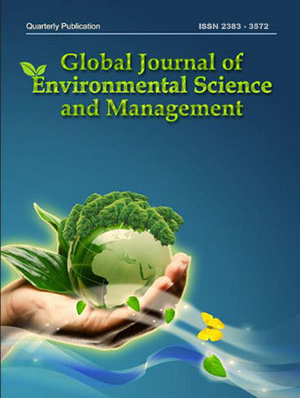Document Type : ORIGINAL RESEARCH ARTICLE
Authors
1 Department of Entrepreneurship, Corporate and Spatial Economics, Vasyl’ Stus Donetsk, National University, Vinnytsia, Ukraine
2 Department of Finance named after L.l. Tarangul, University of State Fiscal Service of Ukraine, Irpin, Ukraine
3 Department of Finance, Banking and Insurance, Chernihiv National University of Technology, Chernihiv, Ukraine
4 Department of Enterprise Economics and Production Management, Vinnytsia National Technical University, Vinnytsia, Ukraine
5 Vinnytsia Regional Council, Vinnytsia, Ukraine
6 Department of Marketing, Vasyl’ Stus Donetsk National University, Vinnytsia, Ukraine
Abstract
At the end of 2019, the new virus called Coronavirus Disease (Covid-19) spread widely from China all over the world. In March 2020 the World Health Organization declared a new virus outbreak as “a global pandemic”, and recommended social distancing and quarantine. Most countries in Europe have been quarantined. The social aspect of this issue is complicated by the fact that Europe nowadays hosts 82 million international migrants. If migrant workers leave the host country, it reduces the Covid-19 spread. Nevertheless, if migrant workers do not return, it will worsen the situation with the economic crisis. The subject of the study is the instrumental and mathematical aspects of impact simulation of labor migrants’ policy on the economic growth of the host country affected by COVID-19 pandemic. The aim of the work is to develop the system dynamics model for assessing labor migrants’ policy impact on the economic growth of the host country during COVID-19 pandemic. It examined through hypotheses of different scenarios of labor migrants policy impact on the host country economic growth in Covid-19 pandemic. The proposed model combines epidemiological and the economic growth models and relies upon real statistical data. The analysis was carried out in four European countries. The results of the study enabled to state that without migrant workers the gross domestic product may fall to 43% in Italy, 45% in Netherlands, 37% in Spain and 200% in Switzerland in 2020.
Graphical Abstract
Highlights
- Proposed an approach to simulation economic development scenarios and migrant’s policy taking into account the Covid-19 pandemic;
- Causal loop diagram of impact of labor migrants policy on the host country economic growth in Covid-19 pandemic and structure of epidemiological and economic growth models were built;
- Results simulation that migrant workers department policies have a greater impact on reducing GDP than Covid-19 mortality was obtained;
- Migrant workers should stay in the host country during a Covid-19 pandemic period, because economic crisis deepens further without their labor, making economic growth impossible.
Keywords
- Covid-19 (Coronavirus) pandemic
- Epidemiological model
- Economic growth
- Gross domestic product
- Migrant worker
- System dynamics model
Main Subjects
Citation Metrics & Captures
Google Scholar | Scopus | Web of Science | PlumX Metrics | Altmetrics | Mendeley |
Copyrights
©2021 The author(s). This is an open access article distributed under the terms of the Creative Commons Attribution (CC BY 4.0), which permits unrestricted use, distribution, and reproduction in any medium, as long as the original authors and source are cited. No permission is required from the authors or the publishers.



Letters to Editor
[1] Letters that include statements of statistics, facts, research, or theories should include appropriate references, although more than three are discouraged.
[2] Letters that are personal attacks on an author rather than thoughtful criticism of the author’s ideas will not be considered for publication.
[3] Letters can be no more than 300 words in length.
[4] Letter writers should include a statement at the beginning of the letter stating that it is being submitted either for publication or not.
[5] Anonymous letters will not be considered.
[6] Letter writers must include their city and state of residence or work.
[7] Letters will be edited for clarity and length.
Send comment about this article